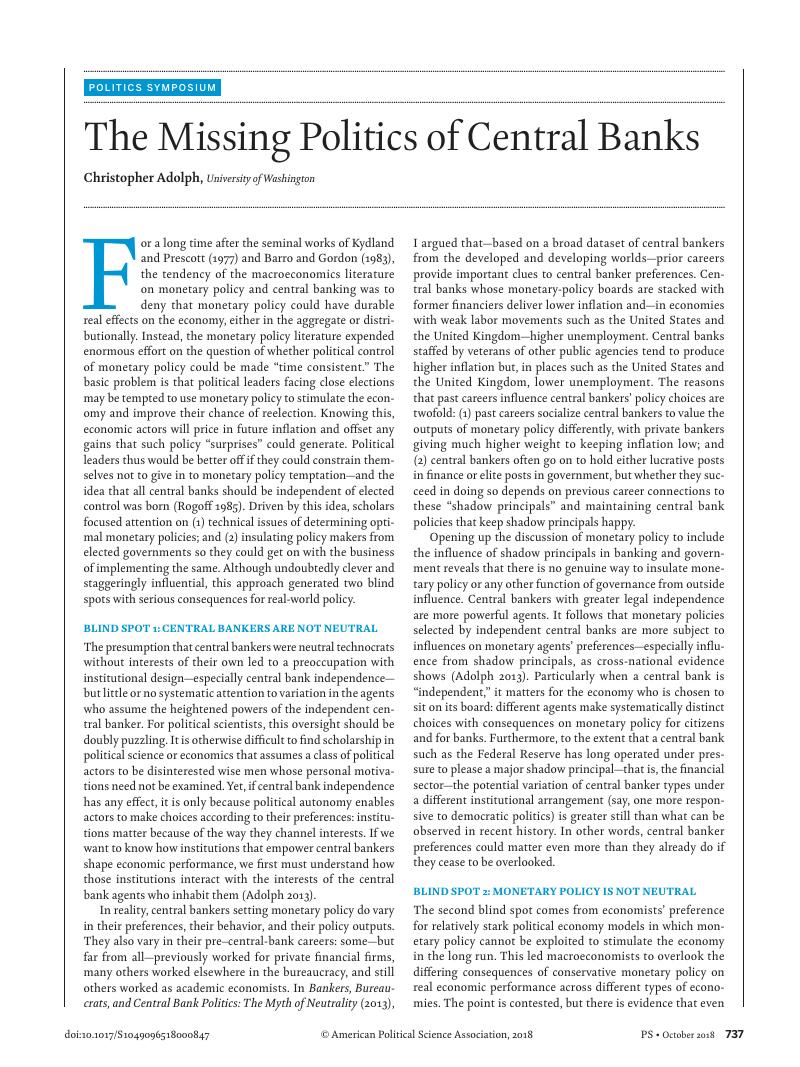Crossref Citations
This article has been cited by the following publications. This list is generated based on data provided by Crossref.
Hartwell, Christopher A.
2020.
The Political Economy of Central Banking in Emerging Economies.
p.
39.
Glinavos, Ioannis
2020.
The Political Economy of Central Banking in Emerging Economies.
p.
23.
Pilkington, Marc
2021.
Is the New Monetary Consensus Still Alive? A Critical Economic and Philosophical Appraisal.
Revue de philosophie économique,
Vol. Vol. 21,
Issue. 2,
p.
7.
Ainsley, Caitlin
2021.
Decentralized central banks: Political ideology and the Federal Reserve System of regional banks.
Governance,
Vol. 34,
Issue. 2,
p.
277.
Van Doorslaer, Hielke
and
Vermeiren, Mattias
2021.
Pushing on a String: Monetary Policy, Growth Models and the Persistence of Low Inflation in Advanced Capitalism.
New Political Economy,
Vol. 26,
Issue. 5,
p.
797.
Richtmann, Mathis L
and
Steininger, Lea
2023.
From bazooka to backstop: the political economy of standing swap facilities.
Cambridge Journal of Economics,
Vol. 47,
Issue. 4,
p.
681.
Jabko, Nicolas
and
Kupzok, Nils
2024.
Indirect responsiveness and green central banking.
Journal of European Public Policy,
Vol. 31,
Issue. 4,
p.
1026.



